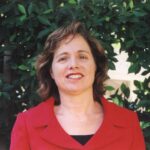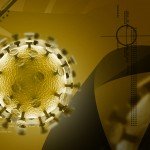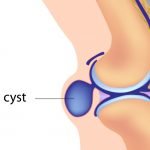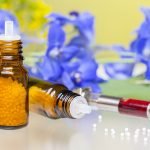Using Zusanli (ST36) to Treat Autoimmune Disease
Leslie Axelrod, ND, LAc
Naturopathic medicine is an art in which we can appreciate simplicity, especially when treating complicated conditions such as autoimmune disease. It is impressive to note that there is a single point on the body that can have a dramatic effect on many different aspects of health. Zusanli (ST36) is an important point to be needled, but research shows that moxibustion, electrical stimulation and injection therapy of bee venom may all be effective in reaping the benefits of this point.
An Effective Tool for Various Areas of Health
 The point ST36 has had a lot of press as the “best all-around point.” In Chinese medicine, it regulates and tonifies qi, builds blood, dispels dampness and reduces stomach heat, along with a multitude of other benefits. It is best known for its ability to improve digestion, alleviate nausea and improve immune function. There is a fair amount of literature on the benefits of ST36 and autoimmune disease. Unfortunately, the numbers of participants in these studies, frequently animals, are usually small, time periods are short, questionable sham acupuncture is performed and controls are not always present. However, the overall message is that this point alone can have a dramatic effect on autoimmune disease.
The point ST36 has had a lot of press as the “best all-around point.” In Chinese medicine, it regulates and tonifies qi, builds blood, dispels dampness and reduces stomach heat, along with a multitude of other benefits. It is best known for its ability to improve digestion, alleviate nausea and improve immune function. There is a fair amount of literature on the benefits of ST36 and autoimmune disease. Unfortunately, the numbers of participants in these studies, frequently animals, are usually small, time periods are short, questionable sham acupuncture is performed and controls are not always present. However, the overall message is that this point alone can have a dramatic effect on autoimmune disease.
Literature reveals that ST36 has been shown to be an effective tool in reducing cytokines, healing gut mucosa, alleviating joint swelling, reducing pain and reducing abnormal bony proliferation. It addition, it can address some of the factors leading up to and proliferating chronic disease, including abnormalities in adrenal function and digestion.
ST36 is located 3 cun below the lateral “eye” of the knee, approximately one finger width lateral to the tibia. Some of the Western implications of this point, as indicated in the texts, Chinese Acupuncture and Moxibustion and Acupuncture, A Comprehensive Text, include: diarrhea, allergies, abdominal distention, insomnia, indigestion, constipation, enteritis, edema, emaciation, anemia, fatigue, weakness and deficient conditions. Many patients with autoimmune disease commonly have one or more of these complaints.
Use with Arthritis
A new group of drugs called biologic response modifiers or biologics is being used to treat rheumatoid arthritis, psoriatic arthritis and ulcerative colitis. Some of these medications significantly decrease the cytokine TNF-alpha, which improves the course of the disease but also increases the risk of infections. ST36 has been shown to also decrease TNF-alpha, but without the risk of immune suppression. The effect of electroacupuncture (EA) stimulation of ST36 on serum TNF-alpha concentration and colonic TNF-alpha mRNA expression level was studied by Tian et al. (2003) in an ulcerative colitis (UC) rat model. Thirty-two male rats were divided into four groups: a healthy control, a UC-induced control, UC-induced with EA on ST36 and a UC control with “sham” EA. The UC-induced rat group had EA performed on ST36 daily for 10 days; the control UC group had EA performed on a point 0.5cm beside ST36. Upon sacrifice, colonic mucosal inflammation and damage was assessed, along with serum TNF-alpha concentration and colonic TNF-alpha mRNA levels. The inhibitory rate of serum TNF-alpha and colonic TNF-alpha mRNA in the ST36 treated group was 16% and 44%, respectively. Morphologic damage score was also increased significantly in rats with UC (P<0.01), whereas it was decreased by EA at ST36 (P<0.05). There was no significant difference between the UC control group and the UC group with EA at the non-acupoint.
In a study of autoimmune-induced arthritis in rats (Kim et al., 2006), moxibustion was applied to ST36 on the ipsilateral side of the affected limb for nine days. Behavioral and chemical tests were performed afterwards. Stepping force of the affected hind limb improved significantly. Pain and production of endogenous nitrous oxide were also reduced.
ST36 and Bee Venom
Bee venom has been used as a therapeutic agent in arthritics for decades. It has been injected into various regions, including local, paraspinal and acupuncture points. Injection of 1mg/kg/day directly into ST36 in rheumatoid arthritis patients produced a more significant anti-inflammatory and pain-relieving effect on the primary site of inflammation than when it was injected into a “non-acupuncture” point on the midline of the back (Kwon et al., 2001). The effect on a secondary site was the same between the two locations of injection. The results lasted 12 to 21 days post treatment. In another study, Kwon et al. (2002) found the water-soluble fraction of bee venom (BVA) to be the effective component when a subcutaneous injection of BVA (0.9 mg/kg/day) was injected into ST36. BVA was found to decrease serum IL-6 as well as paw swelling, bony proliferation and soft tissue swelling. The non-water-soluble fraction (BVE) was ineffective.
Lee et al. (2004) investigated the effect of bee venom on cytokines in the synovial fluid of rats with autoimmune-induced arthritis. Five weeks after induction of arthritis, 0.1ml of bee venom was injected into ST36 bilaterally twice weekly for a total of five injections. Normal saline was injected into the control at the same frequency. The rats were sacrificed at the end of eight weeks, and synovial tissue and cytokines were evaluated. The number of arthritic limbs and serum TNF-alpha was significantly lower in the bee venom-injected group than the control. The bee venom suppressed development of arthritis as well as inhibited the immune response associated with induced arthritis.
Effects on Adrenal Function
In addition to its effects on inflammatory markers, ST36 has a beneficial effect on adrenal function. Lin et al. (1991) performed a study on eight healthy female dogs given prednisolone acetate to induce Iatrogenic Cushing’s Syndrome (ICS). Electroacupuncture was performed on ST36 bilaterally for 30 minutes, three times per week, for three consecutive weeks. The control had a non-acupuncture point needled with the same protocol on the brachialis muscle. Serum cortisol levels were measured in the two groups, and indicated that ST36 helped to restore the adrenocortical hypofunction secondary to ICS. This was a short-term study, but it could be useful, especially in patients on chronic steroid therapy.
In conclusion, ST36 is a single powerful point that can be used by the practitioner or patient (daily moxa) in the treatment of autoimmune disease. There are a variety of ways to stimulate this point, in addition to acupuncture needling. It can stand alone, but as with many other modalities, the patient would most likely benefit by a more comprehensive approach. Whether used alone or in combination, Zusanli reminds us of the beauty of simplicity in treatment of the whole person.
 Leslie Axelrod, ND, LAc is a professor at SCNM, where she teaches rheumatology and clinical sciences. She graduated from Bastyr University in 1987. She recently co-authored a study on MSM and osteoarthritis of the knee, which was published in the March 2006 Osteoarthritis and Cartilage issue. She maintains a private practice in an integrative rheumatology and yoga setting. Dr. Axelrod is also a staff member at Maricopa Integrative Health Systems, the county healthcare system.
Leslie Axelrod, ND, LAc is a professor at SCNM, where she teaches rheumatology and clinical sciences. She graduated from Bastyr University in 1987. She recently co-authored a study on MSM and osteoarthritis of the knee, which was published in the March 2006 Osteoarthritis and Cartilage issue. She maintains a private practice in an integrative rheumatology and yoga setting. Dr. Axelrod is also a staff member at Maricopa Integrative Health Systems, the county healthcare system.
References
Bian, X: Essentials of Chinese Acupuncture, Beijing, 1980, Foreign Languages Press.
Cheng N and Liangyue D (eds.): Chinese Acupuncture and Moxibustion, Beijing, 2005, Foreign Languages Press.
Kim JH et al: Moxibustion at ST36 alleviates pain in complete Freund’s adjuvant-induced arthritic rats, Am J Chin Med 34(1):57-67, 2006.
Kwon YB et al: The water-soluble fraction of bee venom produces antinociceptive and anti-inflammatory effects on rheumatoid arthritis in rats, Life Sci May 31;71(2):191-204, 2002.
Kwon YB et al: Bee venom injection into an acupuncture point reduces arthritis associated edema and nociceptive responses, Pain 90(3):271-280, 2001.
Lee JD et al: Anti-inflammatory effect of bee venom on type II collagen-induced arthritis, Am J Chin Med 32(3):361-7, 2004.
Lin JH et al: Treatment of iatrogenic Cushing’s syndrome in dogs with electroacupuncture stimulation of stomach 36, Am J Chin Med 19(1):9-15, 1991.
O’Connor J, Bensky D: Acupuncture, A Comprehensive Text, Vista, 1984, Eastland Press.
Tian L et al: Downregulation of electroacupuncture at ST36 on TNF-alpha in rats with ulcerative colitis, World J Gastroenterol May;9(5):1028-33, 2003.









